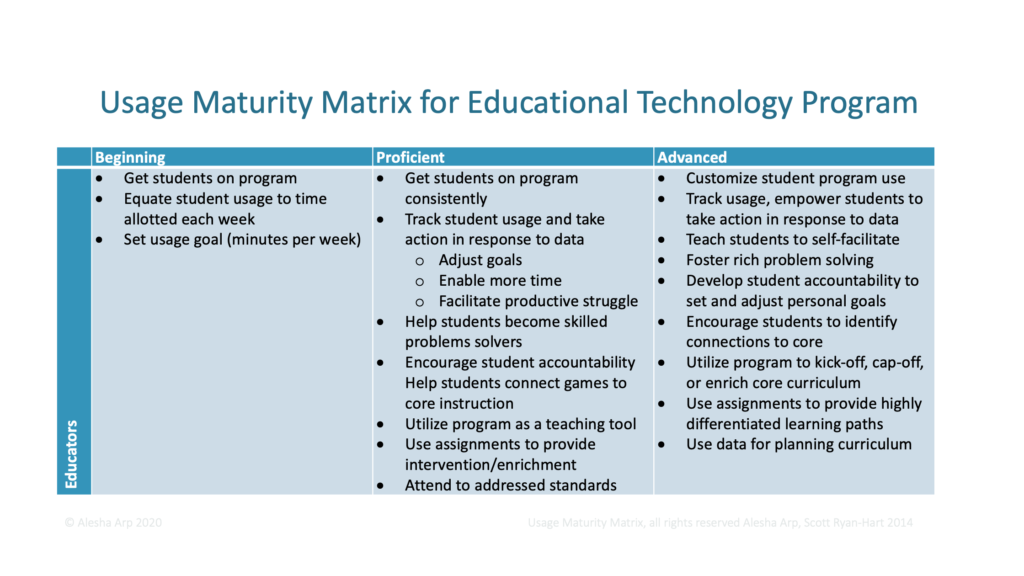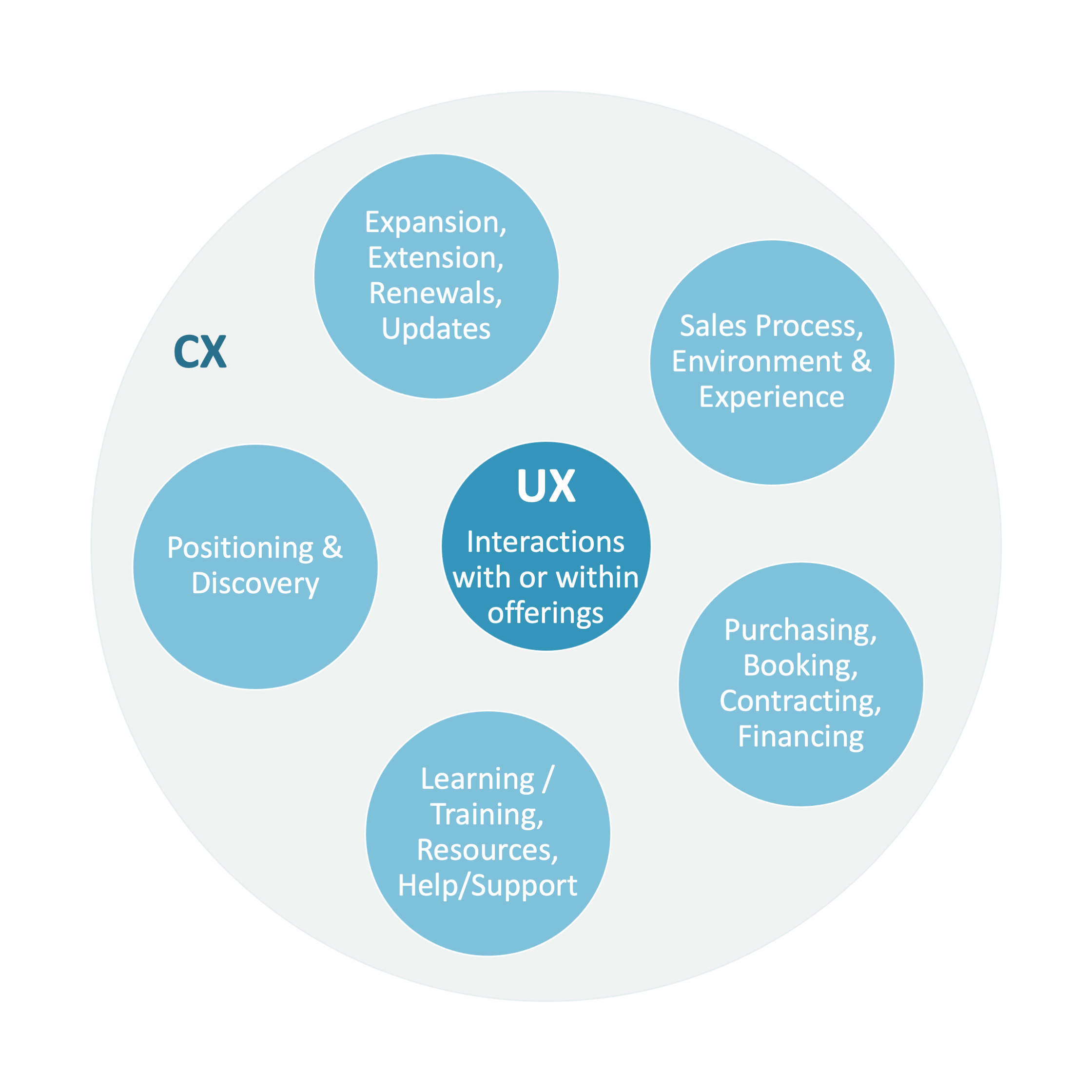Using a Usage Maturity Matrix to Make Design and Strategy Decisions
Early Foundations
You may recall from earlier installments in this series, that usage maturity is a measure of users’ comfort and familiarity with, and degree of use of, a product, process or place.
During our master’s capstone research at Kent State, my project partner and I explored the varied levels of usage maturity of participants using Apple’s voice assistant Siri and found usage maturity did not coincide with participants’ tech savviness.
To illustrate this, think of your own tech savviness and score yourself with one to five stars, five being high.
Now, think of an app or program that confounds you, that you struggle to learn or use well.
Do the challenges with that digital experience compel you to lower your tech savviness rating? Probably not, you retain your 3 or 5 or however-many savviness stars, but your usage maturity with that program may be low.
Mining Organizational Knowledge
In the many years since that capstone project, a Usage Maturity Matrix has become a valuable tool in my toolbox. To develop a Usage Maturity Matrix© we begin with user experience research and we can extend the use of the matrix across our customer experience strategy.
Because our individual experiences vary, it’s conceivable our definitions of user experience and customer experience are also varied. I propose that…
UX encompasses the users’ interactions with or within the sites, systems, services, products, places, and processes our organizations offer.
CX is everything else around that, beginning with how the customer learns about our organization’s offerings, through end-of-life of those offerings or their engagement with them.
With this context, let’s dive into some of the value teams can reap by developing and using a Usage Maturity Matrix.
In 2017, I began working for an educational technology and social impact organization focused on creating a more usable, actionable, digital math program for millions of students and their educators.
In addition to familiarizing myself with the existing product I would be working to redesign, I kicked off my research with some internal knowledge mining:
- Read and categorized over 300 open support-desk tickets
- Gathered and sought to understand multiple sets of division-specific personas being used throughout the organization
- Conducted interviews with cross-functional teammates
- Developed and facilitated a customer experience gap analysis workshop with the leadership team
From this institutional knowledge I learned:
- Users’ longevity with the product did not correlate to their usage or skill with it
- The organization saw users through very different division-specific lenses
- Despite having one mission-driven goal, there were countless ideas about how to achieve that goal with this digital math program in the pole position
From that point forward, as I conducted the product-specific generative and evaluative user experience research, I kept the entire customer experience in mind.
Extending Cross-functionally
The combined internal and external discovery, plus continued collaboration on the customer experience mapping, yielded the functional priorities for the product.
We list functional priorities in our Usage Maturity Matrix according to usage maturity level.
While I obviously cannot share specifics, this sample matrix could be applied to any educational technology program.

Functional priorities can often work across various user segments, making a Usage Maturity Matrix a more valuable tool than role-specific personas. In the case of an educational technology product, the users (in addition to students) might include teachers, curriculum coaches, school principals, district administrators, and possibly parents. The functional priorities will extend across these segments. Our matrix can be used to cross-check throughout the entire digital platform to ensure users have their functional priorities met regardless of their role.
When mapped to the jobs to be done with whatever site, system, service, product, place or process our organizations offer users, we can design the transitions that move users up into higher levels of usage maturity.
My UX research for this digital math program revealed an extensive range of usage variation among our users, much the same way the voice assistant research did when I was at Kent State. Moving users into higher levels of usage maturity helps keep them in our design ecosystem.
A Usage Maturity Matrix can also be translatable cross-functionally and can serve as a stepping-stone toward larger organizational changes. The programmatic functional priorities can become measurements added to a customer health score and used to predict churn. Organizations who offer training can map training courses to the functional priorities across the usage maturity levels. Sales teams can speak to the progression from beginning up through the maturity levels.
Throughout the EdTech organization, teams began working to meet customers at their levels of maturity by developing strategies and redesigning processes to support customers’ growth into higher levels of customer and usage maturity.
Priorities and Decisions Align
While I stayed engaged with that wider CX strategy and served as a catalyst in bridging silos, the greatest impact of the Usage Maturity Matrix was in design, product, and engineering…
It helped us to
- Focus UX research
- Communicate user needs
- Make difficult design decisions
- Prioritize project scope
- Triage feedback
- Stack-rank backlogs
- Plan our future roadmap
Early research revealed that despite the existing program being robust and feature rich, a large percentage of users were in the beginning stages of usage maturity, even at schools where teachers and students had been using the program for several years. Robust and feature rich often means you have more usability work to do.
We focused on meeting users where they were in usage maturity by delivering the beginning level functional priorities front and center, and then designed the proficient and advanced features and functions to be progressively discoverable.
In design we talk about functions being progressively disclosed, but from a user perspective, they need to be progressively discoverable… and easily recoverable so that if a user follows their curiosity to a function they’re not quite ready for, they can easily get back to their comfort zone.
Our Usage Maturity Matrix helped us map, design, and usability test this discoverability and recoverability.
As happens, engineering had some hiccups along the way, including immediate program support direct to families, during the COVID-19 shutdowns.

The Usage Maturity Matrix helped us assist our product and engineering team determine what could be descoped. It also helped us prioritize bugs and backlog items through our piggy-backed quality assurance and product acceptance processes and helped us triage feedback we gathered during our beta roll-out.
When challenges arose from distance learning environments our matrix helped us determine what data to deliver through the program which had been contextually generated when students and teachers were together in the classroom.
UX research and design is fraught with these decision points and milestones. A Usage Maturity Matrix makes them easier.
Alesha Arp and Scott Ryan-Heart will be running a workshop on this topic at the 2021 Information Architecture Conference. Participants will learn what a Usage Maturity Matrix is, will then breakout into an exploratory exercise using a UMM on their own digital spaces.
Usage Maturity Matrix © 2014-2021 all rights reserved Alesha Arp and Scott Ryan-Hart.
4 Star Rating, photo by Kevin Bhagat on Unsplash, edited by Justin Templetin.


